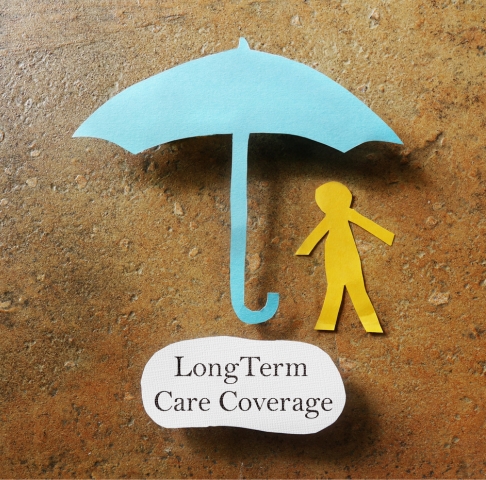Have you ever wondered whether you’re saving enough, and how much those around you save?
Most of us want to save just the right amount — not too little or too much.
You probably know the perils of saving too little, like having a stressful time should there be a “rainy day” — whether that's losing your job or facing an expensive medical emergency. We can never be too cautious.
On the other end of the spectrum, if you save “too much” (yes, there is such a thing!), rather than choose to divert some money into investing, you might miss out on potential extra earnings.
So… what is the “sweet spot”?
Look, we understand everyone’s priorities are different, and we should not be assuming everyone’s "sweet spot" is the same. So, for better insight, we will look at 3 working millennials and how they allocate their monthly salary. Hopefully, one of their stories will resonate with your own priorities, and you can glean some insight from their thought processes.
#1 Charles, 31, married
Charles has been working for almost 5 years and has just set the audacious goal of saving S$100,000 over the coming years. (Imagine what he could do with that?!)
Impossible? Well, he’s almost halfway there.
Goal: Save S$100,000 in the next 5 to 6 years
Inspired by the popular advice out there on saving at least S$100,000 before you hit 30, Charles takes it upon himself to do so in the next 5 to 6 years. “I’ve already crossed the 30-year-old mark, but I think it’s never too late to start doing something good for my finances,” says Charles.
Once he’s reached that goal, Charles intends to use his savings to partially fund the purchase of a Build-To-Order (BTO) unit with his wife.
There’s also a philosophical element to his planning. Charles believes in the process of diligent saving as a form of character building.
How much does he save?
About a quarter of Charles’ salary goes into his personal savings. Charles uses this savings pool fund to keep extra cash handy in case of any emergencies, occasionally channeling some of it into an investment portfolio.
“In the current low interest rate environment, I’m looking out for something that offers better returns and flexibility so that when I need money, I don’t have to worry about withdrawal penalties”, he says.
Charles scouts around and finds the Singlife Account, an everyday insurance savings plan which provides up to 3% p.a. base returns^. He feels it is a great plan to help him grow his savings. The Singlife Account has no lock-in period; he can make withdrawals anytime without incurring any fees. Moreover, he can also get life insurance coverage of up to 105% of his account value. Knowing that the Singlife Account only needs a minimum initial premium of S$100, Charles is not worried about having insufficient money to start this insurance savings plan.
^On your first S$10,000. For amounts above S$10,000, up to S$100,000, enjoy a base return of 1% p.a. Available until such time as updated by Singlife.
What happens to the rest?
About 30% of Charles’ salary goes to food and transport. He also gives his parents S$500.
Charles then allocates about 9% of his salary to utility bills. The rest goes to things like activities with friends and personal purchases.
#2 Anne, 26, engaged
Currently an art director, Anne has been working for almost 6 years.
Goal: Save for wedding and additional S$50,000 before age 30
Anne plans to save S$20,000 to S$30,000 for her wedding in 1 to 2 years, which she intends to keep small scale. She also aims to save at least another S$50,000 before turning 30 — keeping all that money as an emergency fund.
Something she firmly believes in is clearing her debts as soon as possible. “I had student debt previously and wasn’t earning much, so I had to cut down expenses to pay off my debt quickly,” Anne says.
Why was this a priority for her?
“You’re not actually saving money if you have debt. Once you’ve cleared them, you then can start saving money for things like a rainy day fund; even a little savings is good,” Anne explains.
How much does she save?
Anne saves almost a quarter of her take-home salary and is looking at increasing this proportion to a third.
What happens to the rest?
Anne budgets about 7% of her salary to insurance premiums. Another 10% goes to her parents, with a similar amount going to church and charitable causes.
The rest of her salary is spent on areas like beauty regimes, food, transport and gifts.
Anne dishes out some personal advice on tracking expenditure: “I think a good way to track your expenses is by using an app; it makes you more aware of where you’re actually spending your money. Most importantly, spend within your means!”
The Singlife App, for example, is a one-stop mobile solution to manage your money in the Singlife Account, an insurance savings plan. All your savings, spending and returns earned are shown neatly on the interface, helping you to get the clearest understanding of your finances, anytime.
#3 Mike, 26, attached
Getting married and moving into a new home aren’t just big life milestones, they’re big-ticket expenses too! Mike is a millennial who’s worked for 7 years and is preparing for all that.
Goal: Save enough for the big day and to settle into a new home
Within the next 5 years, Mike aims to accumulate up to S$50,000 for wedding expenses. He wants to save at least another S$35,000 for the renovation of his new flat.
How much does he save?
Mike puts aside about S$700 a month for his personal savings. He also channels S$500 into a joint account shared with his girlfriend.
What happens to the rest?
Mike budgets about S$200 for insurance premiums. “Before purchasing insurance, I prefer to browse websites that offer me a clear idea of what the plan covers. This helps me to understand products quickly and easily, especially when I’m constantly on the go,” he says.
Mike currently contributes a total of S$300 to his parents. “I plan to increase this allowance when I earn a higher salary,” he says.
The rest of Mike’s salary goes to transport expenses and monthly subscriptions
like media streaming services.
For his music streaming subscription, he purchased a more affordable family bundle and split the cost with friends and save money.
Final nuggets of advice about saving for working millennials
Does your budget planning pale in comparison to these three millennials? After reading this, you might be thinking, "Can I really do this savings thing?"
Well, as millennial Charles says, it’s never too late to start.
How much should you save every month, then?
Here are some well-corroborated savings approaches that you can consider putting into practice.
- The 50-30-20 rule
The rule is simply this: Allocate 50% to needs, 30% to wants, and 20% to savings.
Needs are “must-haves” such as food, transport, mortgage payments and healthcare. Despite rising food prices, you can still have enjoyable meals without feeling the financial sting (Smart ways to manage your budget amidst rising food prices | Singlife), which are usually more affected by inflation. Wants are things that aren’t essential, such as another new handbag or video streaming subscriptions. As for the 20% that goes to savings, a portion of it should be allocated to an emergency fund (which brings us to the next rule of saving below).
- The emergency funds
An emergency fund is money set aside for emergencies such as accidents or unexpected loss of income. It should be enough to cover 6 months’ worth of your expenses, whether it’s for food, transport or your home loan.
You can determine how much your emergency fund should have by calculating your expenses in a single month. Then, multiply this amount by 6. If you spend S$2,000 a month, for instance, you should have S$12,000 stashed away as an emergency fund.
It is important to ensure you have a robust safety net for rainy days.
- Insurance
Aside from having an emergency fund, it's also essential to protect yourself and your dependants, i.e. your spouse, kids and parents, with life insurance.
Should you die or be diagnosed with terminal illness, the payout from your insurance policy could help your family pay for your medical and funeral expenses so they don't have to touch savings intended for other things such as your children's university fund. It could also give your loved ones financial support when you're no longer around to provide for them.








